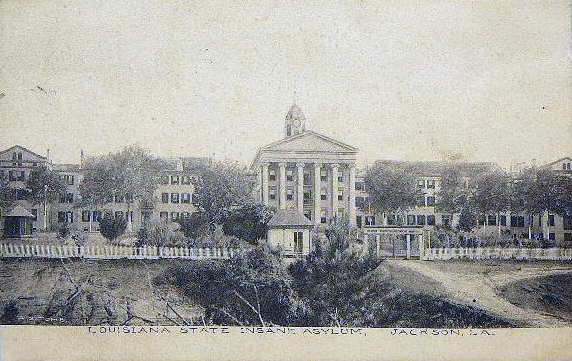What you need to do:
- Read a book.
- Choose one major literary device: plot, character(s), theme(s), symbol(s), other.
- Watch a movie interpreting your book.
- Compare how the movie handled--or didn't handle--the [insert major literary device] found in the novel.
- Prepare a five-minute class presentation (15 slides @ 20 seconds per slide) on the book's use of [insert major literary device] vs. the movie's use of the same.
Suggestions for how to do Step 5 (any of the following used individually or in concert could help your presentation):
- Talk about what interested you about the novel/film, and how the subtle/obvious nature of the [major literary device] that was present in the novel was/wasn't handled in the film satisfactorily.
- Write a simple compare-and-contrast paper about your topic and read it to the class. (You really need to be more creative than this, but this would be the bare minimum needed to "pass.")
- Create a slide show/PowerPoint with highlights from your presentation to guide your audience as you teach your topic.
- Bring in the DVD (or a link on the Internet) and show a BRIEF clip from the movie to illustrate your claim(s) about your topic. By "brief" I mean anything up to the length of a movie trailer, but it could include a series of shorter clips used to support your findings.
- Dress up in a school-appropriate costume to narrate your presentation. Note: you really should not dress up like a Spartan warrior to talk about Pride and Prejudice, but dressing up like a samurai to discuss Kurosawa's interpretation of Shakespeare would be acceptable as long as the costume is not a substitute for analysis. Costumes are only window dressing; therefore, this is entirely optional.
- Interpretive dance followed by a five-minute class presentation on book's use of [insert major literary device] vs. the movie's use of the same.
- Watch the "making of" section of the DVD and find out if the filmmakers had to make compromises/refused to make compromises in the translation of the novel to film. There may even be some kind of production notes online that discuss similar topics, particularly for popular older films or newer films with big marketing budgets. Note: this is called "research," and its inclusion is always encouraged in a scholarly presentation.
- Be creative and come up with another way to impart information about a topic to an audience of your peers. Your target audience is about 15-18 years old; don't bore them.
List of Films Any of these films would be excellent choices, but this list is by no means exclusive. If you have another book that isn't on here, run it by me to make sure that it's acceptable (in other words, something with a little more literary oomph than Captain Underpants).
- Twenty Thousand Leagues Under the Sea by Jules Verne
- Journey to the Interior of the Earth by Jules Verne
- Adventure by Jack London
- The Call of the Wild by Jack London
- Terms of Endearment by Larry McMurtry
- Horseman Pass By by Larry McMurtry
- Adventures of Huckleberry Finn by Mark Twain
- Adventures of Tom Sawyer by Mark Twain
- The Adventures of Sherlock Holmes by Sir Arthur Conan Doyle
- The Lost World by Sir Arthur Conan Doyle
- Alice in Wonderland by Lewis Carroll
- Anne of Green Gables by Lucy Maud Montgomery
- Captain Blood by Rafael Sabatini
- The Curse of Capistrano by Johnston McCulley
- Dracula by Bram Stoker
- The Jewel of Seven Stars by Bram Stoker
- Ethan Frome by Edith Wharton
- Fanny Hill: Memoirs of a Woman of Pleasure by John Cleland
- Far From the Madding Crowd by Thomas Hardy
- Jude the Obscure by Thomas Hardy
- Tess of the d'Urbervilles by Thomas Hardy
- Ivanhoe by Walter Scott
- A Passage to India by E. M. Forster
- A Room with a View by E. M. Forster
- Killer Angels by Michael Shaara
- The Last of the Mohicans by James Fenimore Cooper
- Lord Jim by Joseph Conrad
- The Moonstone by Wilkie Collins
- Of Human Bondage by Somerset Maugham
- Persuasion by Jane Austen
- Emma by Jane Austen
- Sense and Sensibility by Jane Austen
- Mystic River by Dennis Lehane
- Slaughterhouse 5 by Kurt Vonnegut
- The Grapes of Wrath by John Steinbeck
- The Color Purple by Alice Walker
- Cold Mountain by Charles Frazier
- <enter title here> by William Shakespeare
- One Flew Over the Cuckoo's Nest by Ken Kesey
- The Phantom of the Opera by Gaston Leroux
- The Picture of Dorian Gray by Oscar Wilde
- The Prisoner of Zenda by Anthony Hope
- The Scarlet Letter by Nathaniel Hawthorne
- The Strange Case of Dr. Jekyll and Mr. Hyde by Robert Louis Stevenson
- Tarzan of the Apes by Edgar Rice Burroughs
- A Clockwork Orange by Anthony Burgess
- The Man Who Would Be King by Rudyard Kipling
- Vanity Fair by William Makepeace Thackeray
- War of the Worlds by H.G. Wells
- Washington Square by Henry James
- Wuthering Heights by Emily Bronte
Due Date
The due date for this project is rolling, meaning that people will volunteer to present either the 4th, 5th, or 6th six-week grading period. While that will mean that the first round has to go sooner, there is an advantage to not-have to rush at the end when everyone else is doing senior-stuff.



